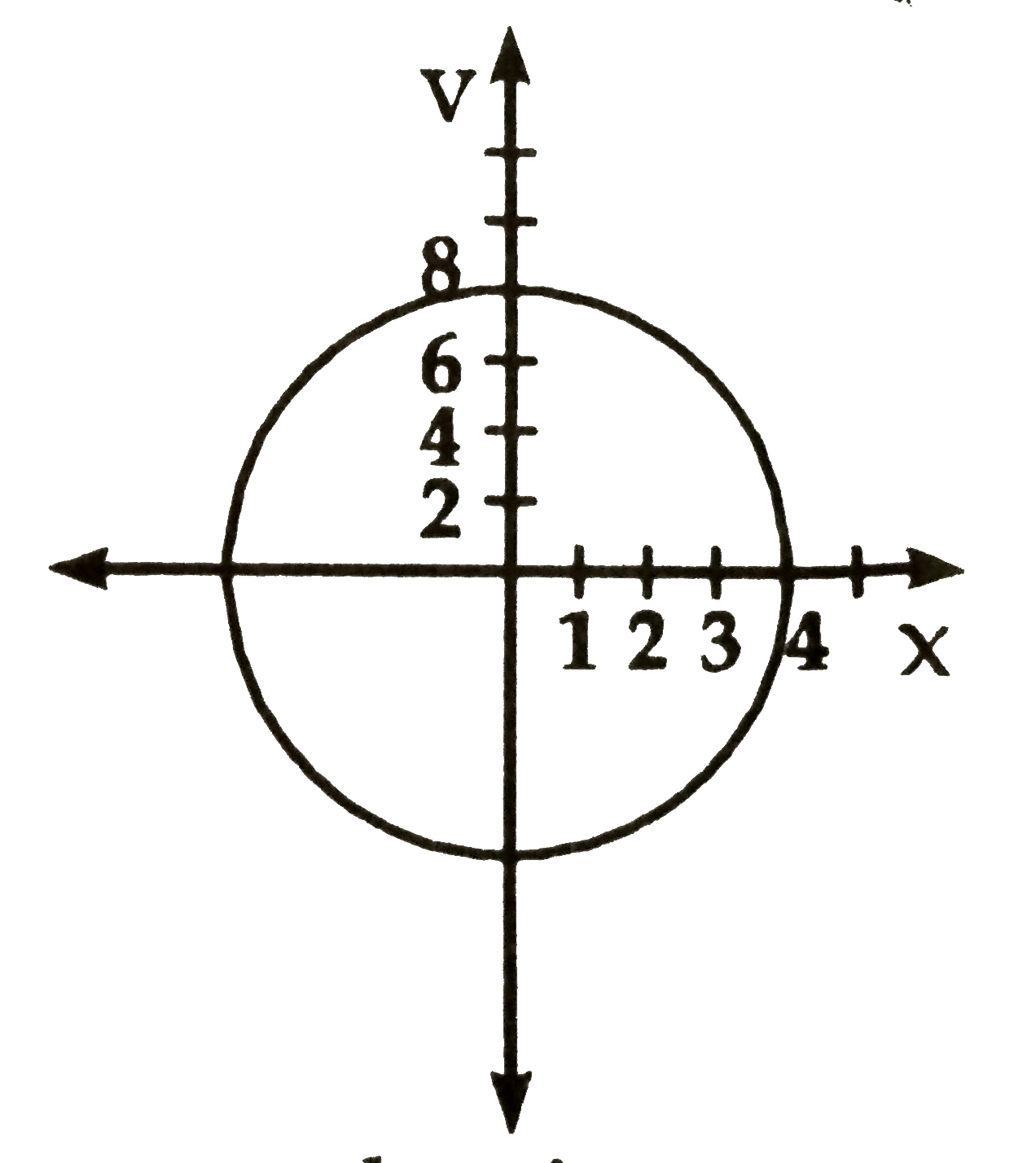Show that for a particle executing S.H.M., velocity and displacement have a phase difference os π/2.
To show that for a particle executing Simple Harmonic Motion (S.H.M.), the velocity and displacement have a phase difference of π2, we can follow these steps:
Step 1: Define the Displacement in S.H.M.
The displacement x(t) of a particle in S.H.M. can be expressed as:
x(t)=Rsin(ωt)
where:
- R is the amplitude of the motion,
- ω is the angular frequency,
- t is the time.
Step 2: Differentiate Displacement to Find Velocity
To find the velocity v(t), we differentiate the displacement with respect to time:
v(t)=dxdt=ddt(Rsin(ωt))=Rωcos(ωt)
Step 3: Express Velocity in Terms of Sine Function
We can express the cosine function in terms of sine to identify the phase difference:
v(t)=Rωcos(ωt)=Rωsin(ωt+π2)
This shows that the velocity can be represented as a sine function with a phase shift of π2.
Step 4: Identify the Phases of Displacement and Velocity
From the expressions derived:
- The phase of displacement ϕ1=ωt
- The phase of velocity ϕ2=ωt+π2
Step 5: Calculate the Phase Difference
The phase difference Δϕ between velocity and displacement is given by:
Δϕ=ϕ2−ϕ1=(ωt+π2)−ωt=π2
Conclusion
Thus, we have shown that the phase difference between the velocity and displacement of a particle executing S.H.M. is π2.
---
The displacement x(t) of a particle in S.H.M. can be expressed as:
x(t)=Rsin(ωt)
where:
- R is the amplitude of the motion,
- ω is the angular frequency,
- t is the time.
To find the velocity v(t), we differentiate the displacement with respect to time:
v(t)=dxdt=ddt(Rsin(ωt))=Rωcos(ωt)
We can express the cosine function in terms of sine to identify the phase difference:
v(t)=Rωcos(ωt)=Rωsin(ωt+π2)
This shows that the velocity can be represented as a sine function with a phase shift of π2.
From the expressions derived:
- The phase of displacement ϕ1=ωt
- The phase of velocity ϕ2=ωt+π2
The phase difference Δϕ between velocity and displacement is given by:
Δϕ=ϕ2−ϕ1=(ωt+π2)−ωt=π2
Thus, we have shown that the phase difference between the velocity and displacement of a particle executing S.H.M. is π2.
Topper's Solved these Questions
- OSCILLATIONS AND WAVESBOOK - PRADEEPCHAPTER - OSCILLATIONS AND WAVESEXERCISE - Short Answer Questions
104 Videos
- OSCILLATIONS AND WAVESBOOK - PRADEEPCHAPTER - OSCILLATIONS AND WAVESEXERCISE - Long Answer Questions
33 Videos
- OSCILLATIONS AND WAVESBOOK - PRADEEPCHAPTER - OSCILLATIONS AND WAVESEXERCISE - conceptual problems
84 Videos
- MATHEMATICAL TOOLSBOOK - PRADEEPCHAPTER - MATHEMATICAL TOOLSEXERCISE - Fill in the blanks
5 Videos
- PHYSICAL WORLD AND MEASUREMENTBOOK - PRADEEPCHAPTER - PHYSICAL WORLD AND MEASUREMENTEXERCISE - Competiton Focus Jee Medical Entrance
18 Videos
Similar Questions
Knowledge Check
The acceleration of a particle executing S.H.M. is
AAlways directed towards the equilibrium positionBAlways towards the one endCContinuously changing in directionDMaximum at the mean positionThe phase of a particle executing S.H.M is π/2 when it has
Amaximum displacementBmaximum velocityCmaximum energyDnone of the aboveA particle executing SHM. The phase difference between velocity and displacement is
A0Bπ2CπD2π
A particle executes SHM. Then the graph of velocity as a function of displacement is
View SolutionThe phase of a particle in S.H.M. is π/2, then :
View SolutionThe variation of the acceleration (f) of the particle executing S.H.M. with its displacement (X) is represented by the curve
View SolutionThe graph shows the variation of displacement of a particle executing S.H.M with time. We inference form this graph that :-
_E01_037_Q01.png)
View SolutionA particle is executing SHM. Then the graph of velocity as a function of displacement is
View Solution

